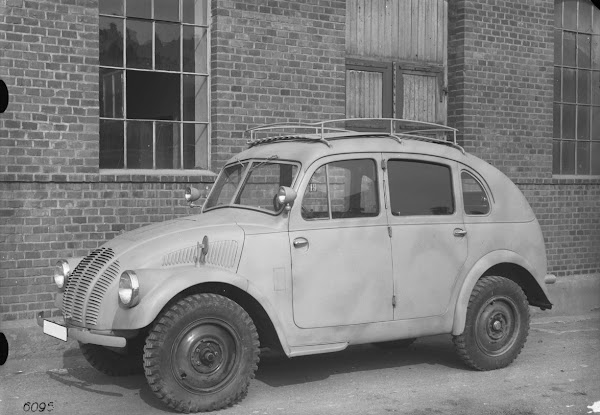
As a major Czechoslovak industrial concern, Ringhoffer-Tatra regularly responded to military contracts. Even their standard medium and heavy trucks were developed with an eye on military use. In 1935 the Czechoslovakian army placed a tender for a general purpose medium truck. At the time, Tatra's general purpose truck platform was the T72 six-wheeled chassis, which had barely changed since the type was introduced in the late 1920s. The type was extremely robust, as proven by Dr Jiri Baum's world tour (including Australia) in 1934-35. https://tatrat600.blogspot.com/2020/09/across-australia-by-tatra-baum.html

The T72 chassis was updated and given a new, improved 2.5 litre flat-four air-cooled front-mounted engine. Both rear axles were driven via the trusty Tatra design principle of independently sprung half axles.

A new front cabin with a curved bonnet was fitted and various rear body styles were available, from standard 'kubel' or bucket seat style to flat load bed.

Factory photos

Factory photos

The Tatra T82 went into service with the Czechoslovakian military in 1936 where it saw use as a troop transporter, artillery tractor and anti-aircraft gun platform. As with all Tatra vehicles, production was slow, with only 325 units coming off the production line before the Sudentenland was annexed by Nazi Germany in 1938. The factory was seized and nationalized by the Germans, being incorporated into the Industrialwerke Hermann Goering AG. The Industrialwerke was responsible for all industrial concerns in the Greater Reich's eastern provinces and it's first action was stop all vehicle production. After a six month review, Ringhoffer-Tatra was permitted to restart vehicle production, but for three vehicles types only - the Tatra T57 budget car, the Tatra T87 limousine and the Tatra T81 heavy truck. The Tatra T82 was withdrawn from production.

Tatra however kept their eye on military contracts, now for the German Wehrmacht however. A military version of the Tatra T57 sedan was developed, designated the T57K (K for Kubel), which was approved for Wehrmacht use in the east. The type would remain in production for the Czech military until 1950.

https://tatrat600.blogspot.com/2022/09/1941-tatra-t57k-kubelwagen.html
The T82 had demonstrated its effectiveness in Czech military service so the Tatra team repeatedly attempted to interest the German authorities in a version for the Wehrmacht. With production lines at the Tatra plant reduced to only three types, the 2.5 litre engine of the T82 was no longer available, so the 3 litre V8 engine of the Tatra T87 was substituted. The cab was modernized, reusing pressings from the T57K and the flat panel sides and doors used by German military vehicles, and this new version was presented as the V809 - V being the designation for experimental.

Factory photos

Regardless of how good the V809 may have been, the Wehrmacht's procurement policy was to license production of a small number of standardized German models; rather than introduce new models, especially from foreign plants. Only a handful of experimental types were built.

In 1941 Tatra again played for a military contract, this time with a 'commanderwagen' version of the V809 specifically for the Afrika Korps.

Described in the factory records as the "Rommel car", this version featured a fully steel hardtop body and was powered by the Tatra T87 V8 engine. Erwin Rommel owned a Tatra T87 as his personal car so it's possible that Tatra was trying to enlist the support of an influential officer.

It is clear from the photos that this car was targeting the officer class. The fittings were luxurious for a military vehicle and included fully reclining seats so that the driver (and at least one passenger) could sleep in the car. This was an official requirement of all German military limousines.
Unfortunately, the 'Rommel car' failed to influence the Wehrmacht only a few examples were built for local use. The Tatra design team continued to work on new concepts throughout the war, but none of these were progressed, including the legendary 'aeroluge.'

The only successful major development was the Tatra T111 heavy truck, which went into production in 1942. The truck was the successor of the T81, but powered by a V12 air-cooled diesel engine (Germany mainly used petrol engines). The Tatra T111 remained in production until 1962 and would become a legend of the reconstruction of Eastern Europe and the Soviet Union.

No comments:
Post a Comment